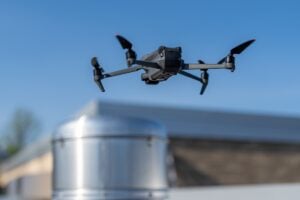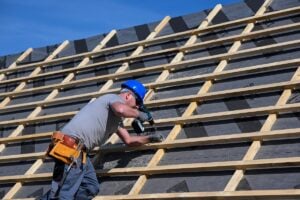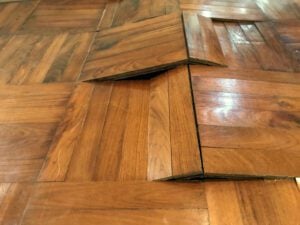Roof inspections have always been a critical part of maintaining a safe, efficient, and long-lasting home. But traditional inspections often involve ladders, walking on steep pitches, and extended labor. Today, homeowners have a safer, faster option: the drone roof inspection. By using drones equipped with cameras and software, roofers can gather precise data without putting themselves—or your property—at unnecessary risk. For those considering roof repairs or replacements, modern roofing services often include drone technology as part of their inspection process, giving you more accurate results from the very start.
Here’s what you’ll discover in this guide:
- Why drone roof inspections are becoming the new standard.
- The biggest benefits compared to traditional inspections.
- How the inspection process works step by step.
- Tips, homeowner considerations, and when to call a pro.
🚁 Why Drone Roof Inspections Are Changing the Game
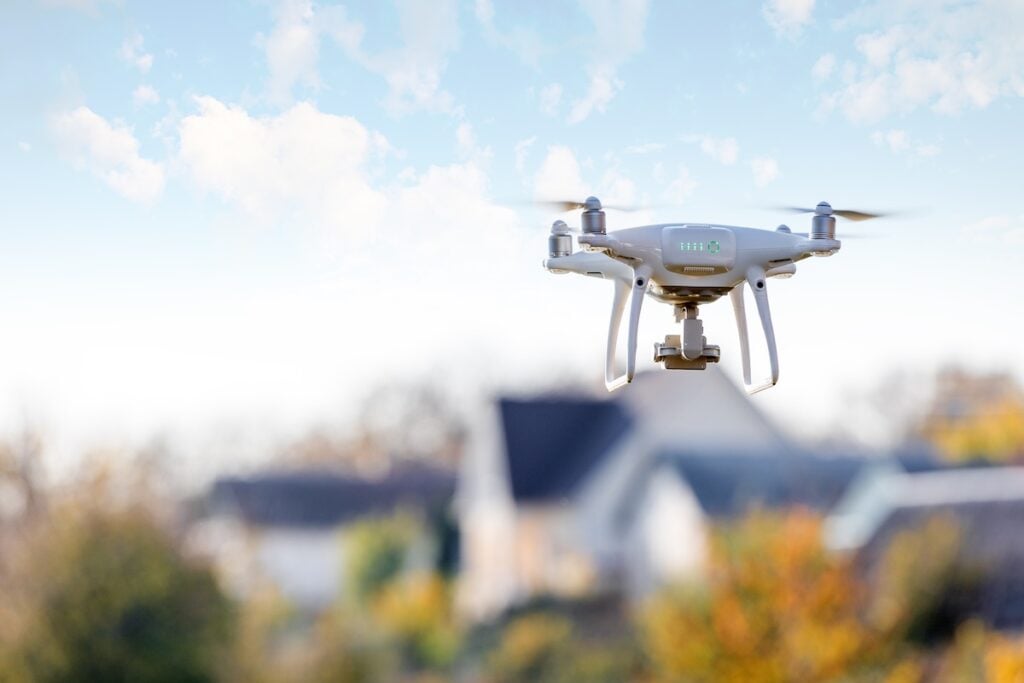
Switching from old-fashioned inspections to drone-based evaluations offers several advantages that directly benefit homeowners. Instead of relying on guesswork or incomplete views, drones provide detailed, reliable information.
- Improved Safety: Eliminates the need for inspectors to climb ladders or walk across unstable roofing surfaces. This is especially important for older homes with fragile materials or multi-story properties with dangerous access points.
- Higher Accuracy: Captures high-resolution images and videos that reveal issues invisible to the naked eye, such as minor flashing separation or early-stage shingle cracking. Some drones even use AI-based software to flag potential problem areas automatically.
- Time Savings: Cuts inspection times dramatically, meaning faster estimates and project starts. Instead of waiting days for a full manual inspection report, homeowners can often see preliminary results within hours.
- Cost Efficiency: Reduces labor and equipment needs, often lowering the overall cost of inspection. For homeowners who want affordable routine checkups, drones make preventative maintenance practical.
- Better Documentation: Provides digital records for insurance claims, warranties, or resale documentation. Homeowners can keep an archive of inspection photos to track how their roof changes over time.
🔎 4 Top Benefits of Drone Roof Inspections
Drone technology offers more than just convenience—it delivers meaningful benefits that make inspections safer, faster, and more reliable. Here are the four biggest advantages homeowners can expect:
1. Safer Inspections
By keeping inspectors off ladders and away from steep or unstable roof surfaces, drones remove the risk of falls and roof damage. Safety is improved not only for contractors but also for homeowners who don’t have to worry about accidents on their property.
2. Better Visual Detail
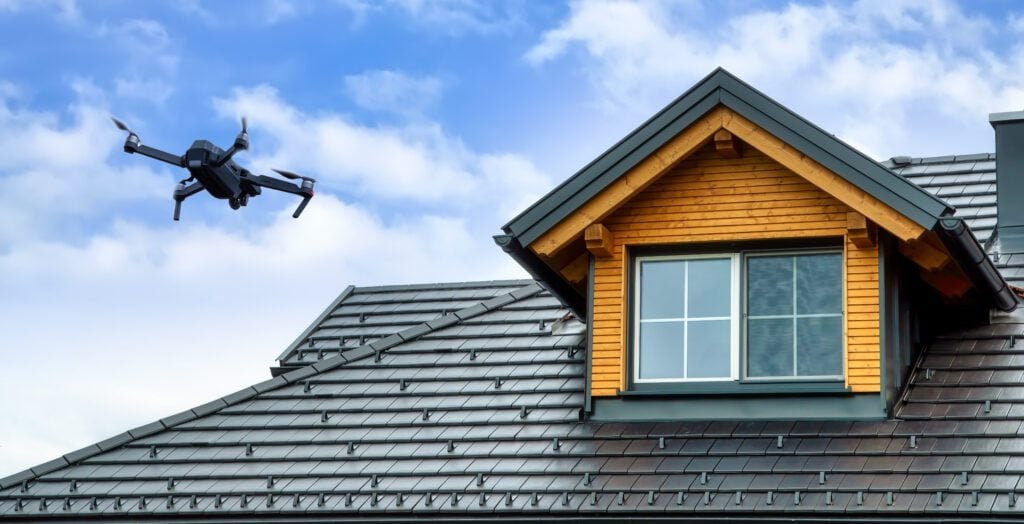
High-resolution cameras and even thermal imaging allow drones to capture details the human eye might miss. From tiny cracks in shingles to hidden moisture beneath the surface, this level of precision ensures nothing is overlooked.
3. Faster Turnaround
What once took hours or even days can now be completed in under an hour. Drone inspections streamline the process, which means homeowners get results and estimates faster, allowing repairs or replacements to move forward without delays.
4. Clear Documentation
Drone inspections provide digital photos, videos, and detailed reports that homeowners can keep on file. These records are invaluable for insurance claims, warranties, or simply tracking the condition of the roof year after year.
🏡 Drone vs. Traditional Roof Inspections
To really see the value, it helps to compare drone inspections with the traditional approach.
- Speed: Drone inspections often take under an hour, while manual inspections can take several.
- Safety: No risk of falls or damage to fragile roofing materials.
- Detail: High-resolution imagery beats what an inspector can see from ground level or limited roof access.
- Accessibility: Drones can easily reach steep, multi-story, or otherwise inaccessible roofs.
- Cost: Traditional inspections may involve more labor and equipment costs, while drone inspections streamline the process.
Traditional methods still have their place—for example, when hands-on tactile testing of materials is necessary. But for the majority of situations, drones are more efficient, less risky, and more accurate.
🛠️ When to Schedule a Drone Roof Inspection
Drone inspections are useful in many scenarios—not just after major storms. Knowing when to schedule one helps you protect your roof and avoid unexpected expenses.
After Severe Weather
Strong winds, hail, or heavy rain can cause damage that isn’t visible from the ground. Drones can quickly confirm whether your roof needs repairs before leaks or structural issues worsen.
Before Buying or Selling a Home
A drone inspection provides thorough documentation for potential buyers or reassurance for sellers, adding credibility to the property listing. In competitive housing markets, it can even speed up the sale.
Annual or Biannual Maintenance
Routine drone inspections help catch early issues, extending the life of your roof and preventing costly repairs. Homeowners who schedule inspections every spring and fall are less likely to face emergency calls.
Insurance Claims
Drone images create clear, timestamped evidence to support claims and speed up the process with insurance providers. This avoids disputes and provides proof of pre-existing conditions.
Large or Complex Roofs
Homes with multiple peaks, steep pitches, or unique designs benefit most since drones can navigate spaces traditional methods struggle to reach.
📋 Homeowner Checklist: Preparing for a Drone Roof Inspection
Making the most of your inspection involves a little preparation. Here are steps homeowners can take before the roofing team arrives:
- Clear the Area: Move cars, patio furniture, or children’s toys that could obstruct the drone’s flight path.
- Secure Pets: Keep pets indoors to prevent distractions during the inspection.
- Note Problem Areas: Share concerns like leaks, drafts, or suspicious water spots inside the home. This helps inspectors prioritize certain sections of the roof.
- Ask About Deliverables: Confirm whether you’ll receive photos, videos, or a full report, and in what timeframe.
- Review Access Restrictions: Ensure there are no neighborhood or HOA rules regarding drone usage that need approval.
💡 Extra Benefits Many Homeowners Don’t Realize
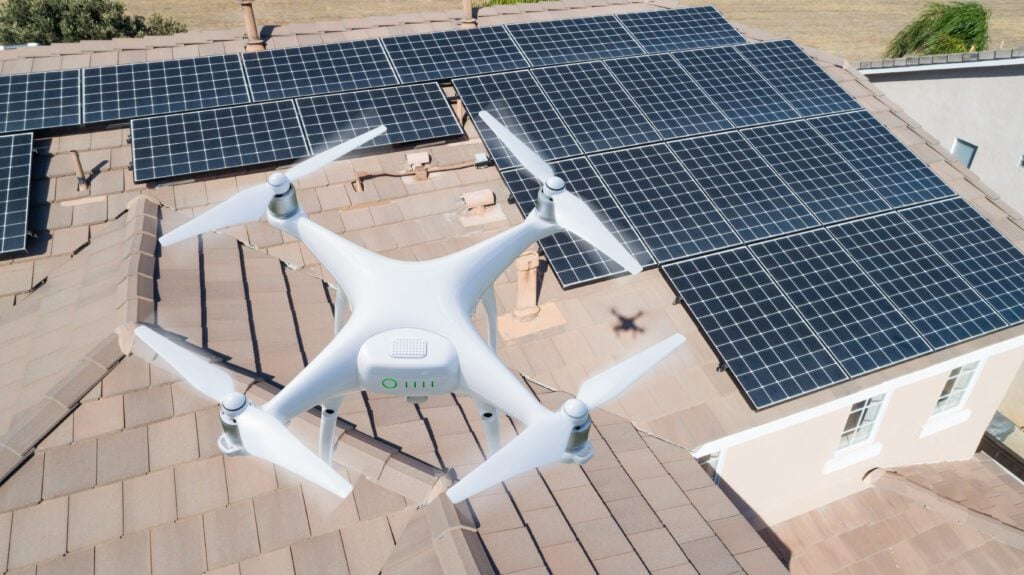
While most people think of drones as a way to take photos, they actually provide a range of hidden benefits that directly affect your home.
- Accurate Measurements: Drone mapping software can calculate roof pitch, square footage, and even estimate materials for replacement.
- Environmental Monitoring: Drones can reveal where moss, algae, or pooling water may shorten roof lifespan.
- Future Planning: Data collected today can serve as a baseline to track roof wear over several years.
- Marketing Edge: For sellers, providing a drone report as part of a listing reassures buyers of the home’s condition.
⚖️ Pros and Cons of Drone Inspections
While drones provide many advantages, it’s fair to weigh both sides:
| Pros | Cons |
| Safe and non-invasive | Weather-dependent (rain, wind can delay flights) |
| High-resolution imagery | Requires licensed operator in some areas |
| Fast and efficient | May not detect tactile issues like soft decking |
| Useful for insurance documentation | Initial setup can be costlier for contractors (but not homeowners) |
For homeowners, the pros typically outweigh the cons, especially when inspections are part of an established roofing service package.
🌤️ Seasonal Tips for Maximizing Drone Inspections
Different times of year highlight different roofing issues. Scheduling inspections strategically ensures nothing slips through the cracks.
- Spring: Spot damage from ice dams, snow load, or high winds.
- Summer: Monitor heat-related wear, especially in southern climates.
- Fall: Ensure gutters and valleys are clear before heavy rain.
- Winter: Detect potential ice dam areas or identify spots where insulation needs improvement.
✅ Protect Your Home with Smarter Inspections
A drone roof inspection isn’t just a modern gimmick—it’s a practical tool that saves time, improves accuracy, and keeps everyone safer. Whether you’re dealing with storm damage, planning a roof replacement, or simply maintaining your home, drones provide a clear advantage over traditional methods. They give you the documentation you need, the confidence to make informed decisions, and the peace of mind that your roof is in good hands. If you’re ready to experience the benefits of modern inspection methods, contact us today to schedule your professional roof evaluation.

